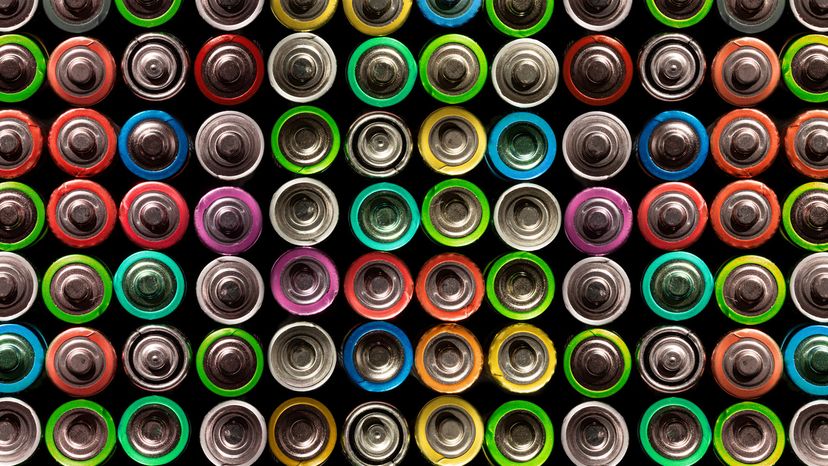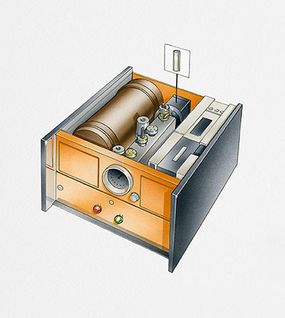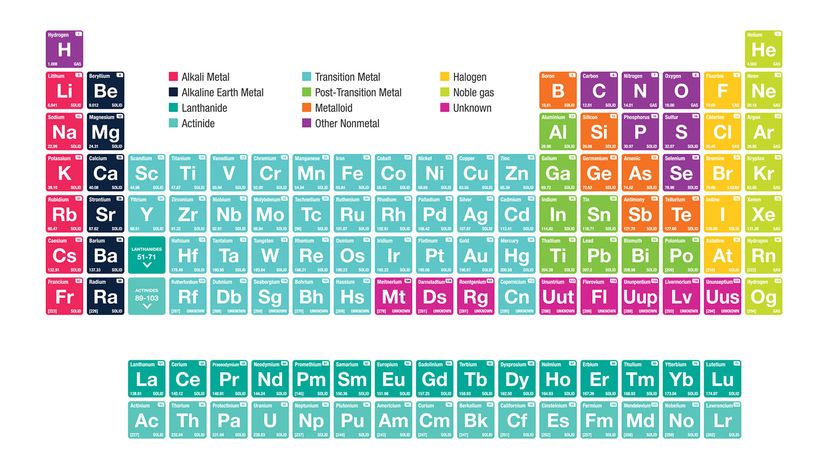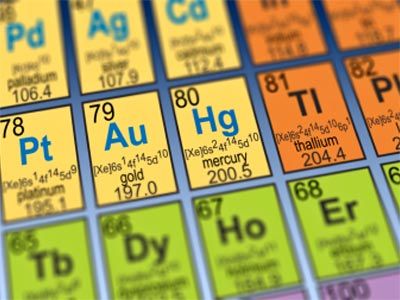What Are Alkali Metals?
Alkali metals are the six different chemical elements found in the first column of the periodic table: lithium (Li), sodium (Na), potassium (K), rubidium (Rb), cesium (Cs) and francium (Fr).
The alkali metals group is part of the S-block of elements in the periodic table, that along with hydrogen, helium, calcium and others, have their outermost electron in an S-orbital.
Advertisement
The alkali metals are soft metals that are highly reactive with water and oxygen. They're so soft that you can cut them with a plastic knife. They also have a silver-like shine and are great conductors of heat and light.
Why Are They Called Alkali Metals?
Alkali metals are so called because when alkali metals react with water, they create highly alkaline substances. Alkalinity refers to the pH of the substance, or the ability to neutralize acid. Substances that are highly alkaline can form strong bases able to neutralize acids and maintain a stable pH level.
Alkali metals are not to be confused with alkaline earth metals.
Advertisement
Chemical Properties of Alkali Metals
Every element has a nucleus, made up of protons and neutrons, and alkali metals are no different. Surrounding the nucleus of atoms are electrons, which are particles with a negative charge. These electrons exist in energy shells around the nucleus of the atoms, each of which can hold a varying number of electrons. The first shell can hold up to two electrons; the second up to eight; the third, 18; and the fourth, 32. It's these shells of electrons and how alkali metals are structured that make them so reactive.
All atoms naturally want to have full set of outer electrons. However, elements in that first column of the periodic table all have one electron in their outermost shell. This outer shell is also called the valence shell, and the electrons that reside there are called valence electrons.
Advertisement
High vs. Low Reactivity
Having only one valence electron in the outermost shell makes it very easy for the alkali metal atoms to reach points of stability — they just need to lose one electron! This willingness and ease of losing an electron to reach a state of equilibrium is known as high reactivity. In fact, reactivity in chemistry is defined by the number of electrons in the outermost shell.
Noble gases (elements like neon and helium) are not very reactive because their outermost electron shells are full. That's why chemists talk about atoms wanting to achieve a "noble gas configuration."
"Since the alkali metals only have one valence electron, they typically achieve this state by giving up that electron. In this process, the alkali metal is said to be oxidized, and whatever takes the electron from the alkali metal is reduced. All of the alkali metals like to give up their single valence electron," says Dr. Chip Nataro, chemistry professor at Lafayette College in Easton, Pennsylvania.
"As electrons have a charge of -1, losing an electron causes the atom to have a charge of +1. When this happens, the atom is referred to as an ion and since it would have a positive charge, it is called a cation. So, all of the alkali metals like to make cations that have a charge of +1."
Alkali Metals in Nature
Since alkali metals react readily, they are usually found in conjunction with other metals in nature. For example, sodium chloride (table salt) and sodium carbonate (soda ash) are widely available sodium compounds.
If an element is highly reactive, it's harder to find its pure form in nature.
"All of these elements were first discovered in compounds [and] some of the discoveries are hard to attribute due to the abundance and usage of the compounds," says Nataro. "As you go down the periodic table, the alkali metals become more inclined to lose their valence electron" and thus, "the amount of the element found in nature also decreases, [resulting in] later discovery dates."
Advertisement
When Were Alkali Metals Discovered?
Lithium was first discovered in 1817 when Johan August Arfwedson, a Swedish chemist, was analyzing mineral ore. Cesium and rubidium were discovered in 1860 and 1861, respectively, by German chemists Robert Bunsen (who lent his name to the Bunsen burner) and Gustav Kirchhoff (who devised Kirchhoff's laws for electrical current). Francium, the most reactive of the alkali metals we currently know of, was discovered in 1939 by French scientist Marguerite Perey at the Curie Institute in Paris.

Sodium and potassium, two very common alkali metals, have unknown discovery dates because they have been used for so long. But scientists weren't able to isolate the pure elements until the famous chemist Humphrey Davy in 1807. Rubidium wasn't isolated until 1928, also by Bunsen and Kirchhoff.
Advertisement
Alkali metals react vigorously to water and air. These elements will dance around, sizzling due to the production of hydrogen gas, and often explode. They get more reactive the further down on the periodic table you go too, with cesium and francium being so reactive that they can burst into flames simply by being exposed to the air. The elements also increase in atomic radius, decrease in electronegativity and decrease in melting and boiling points as you move down the periodic table.
You might wonder how the alkali metals were ever discovered in nature if they react so violently to air and water. Well, as it turns out, most of the alkali metals are found in nature as ions due to their high desire to react and lose that one valence electron. In their ionic form the metals are far less reactive.
Advertisement
Alkali Metals in Everyday Life
Alkali metals have an interesting chemical duality, because they are very common in everyday life but also very uncommon in their raw elemental forms.

For instance, potassium and sodium ions are essential nutrients; as electrolytes, they regulate blood pressure and fluid balance in the body. You can't buy pure sodium atoms at the store, but you can find it in many foods as well as in table salt (sodium chloride), baking soda (sodium bicorbonate) and lye (sodium hydroxide aka caustic soda).
Advertisement
Potassium salts (potassium chloride) can be used to treat low blood potassium and are an important ingredient in commercial fertilizer. Potassium hydroxide is used in soap solutions. Potassium nitrate (saltpeter) was used to make gunpowder and, incidentally, is an excellent food preservative, responsible for giving hot dogs and other processed meats their pink hue.
Lithium is used in battery production, and lithium salts are used as a mood-stabilizing drug.
The more reactive elements, cesium, rubidium and francium, have fewer natural uses. Cesium is used in atomic clocks, drilling and in creating optical glass among other highly specialized applications. Rubidium is used in medical imaging and vacuum tubes. Francium, which is very rare, doesn't have many commercial applications but is used in research and to diagnose some forms of cancer.
Finally, all the alkali metals are also incredibly useful teaching tools in the field of chemistry. Teachers love demonstrating the principle of reactivity by dropping an alkali metal in water only for the class to watch in awe as it spews fire and explodes.
Advertisement

